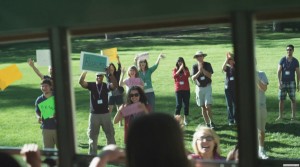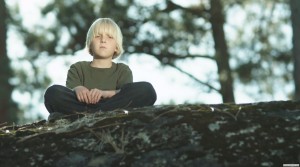
In 2008 we moved our family to an orphanage in the Dominican Republic. For years prior, as a campus minister, I had been challenging students to say yes to missions. I had been telling them to go. I had been sending them. But now it was our turn.
Instead of just saying go, we finally went. And we invited students to come with us. What we saw and experienced changed our lives.
When we came home, after six months living among kids without parents and families, and without hope, we couldn’t help but see there were kids just like them all around us. There were kids that needed hope right here at home too. In fact, more than 400,000 kids currently live in foster care in the United States.
The movie, Camp, by Roebuck Media, masterfully tells their story. Inspired by director Jacob Roebuck’s own week volunteering with a Royal Family Kids camp for children in foster care, the film follows 10-year-old Eli’s journey to find hope, and someone who “gives a damn.”

Like many kids in foster care, Eli comes from a broken home and a rough past. His abusive dad only comes around for money. His mom’s drug addiction is more powerful than her motherly instinct. And he is often left alone, bruised and beaten.
But the majority of the film focuses on his week at summer camp, with Ken, his unlikely, last-minute-volunteer counselor. Though Eli and Ken don’t get along at first, we see their stories on a collision course of hope that would ultimately change both of them, for good.
The camp experience provides an opportunity for Eli and a dozen other foster kids to laugh, play and just be kids for a week. We get a glimpse into each of their stories, as the common experience of many foster kids is revealed in the fears and obstacles that each of them overcomes at camp.
In the end, Ken shares his story too. It’s part of the power and magic of camp: where the stories of trusted adults and kids of all kinds intersect—even if only for a week.
Camp is well-written and accurately portrays the lives and challenges of abused and neglected kids. The acting and production was at least on par with many major movies, a difficult challenge considering the number of kids in the cast and that this is an independent film. More than once, I found myself so engaged with the story that I lost track of time—and more than once I swallowed hard and caught a tear.
We came home from the Dominican Republic changed.
Since then, we have welcomed three foster kids into our home as long-term placements. We know our time with each of them is limited. But, like Ken learns in the film, we also know our job is simply to love them while we have them. And, if it isn’t hard to say goodbye, then we haven’t done our job well.
Which is why, when you see the movie Camp, I recommend you bring your shades.
To learn more about Camp, the movie, including show times, theaters near you and how you can bring it to your area, visit: www.thecampmovie.com
For more information on foster care and adoption in your area, contact your local supervising agency: http://www.adopting.org/adoptions/foster-care-specialists-by-state.html
To see how camp can be a transformational part of all kids’ lives, visit: www.kidsneedcamp.com or www.royalfamilykids.org
Note: “Camp” has an MPAA rating of PG-13 for thematic elements, some violence, a crude gesture and brief language, and it may not be appropriate for your younger children. As with all your entertainment choices, please use discretion.
Disclosure of Material Connection: I requested and received a screening copy of this film for free with the expectation that I would review it on my blog. Regardless, I only recommend products or services I use personally and believe will be good for my readers. This is one of them.
“Oh, and uh… Bring your shades.” Seriously
Thanks you Eric!
I couldn’t have said this any better!